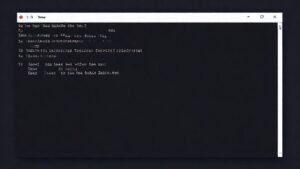IDBI Bank Disinvestment: Government Accelerates Strategic Sale Process
- THE MAG POST

- Sep 7
- 3 min read

The strategic divestment of IDBI Bank is advancing rapidly, with Finance Minister Nirmala Sitharaman expressing confidence in its conclusion within the current fiscal year, 2025-26. This significant move underscores the government's ongoing commitment to optimizing its portfolio of public sector undertakings and generating crucial revenue streams for national development. The process involves a substantial stake sale by both the government and the Life Insurance Corporation (LIC), aiming to infuse private sector efficiency and capital into the banking institution. As the nation navigates its economic trajectory, such strategic asset sales are pivotal in enhancing fiscal health and driving broader economic reforms, making the IDBI Bank transaction a closely watched event in the financial calendar.
IDBI Bank Disinvestment: A Strategic Shift in Public Sector Banking
The Indian government's strategic divestment of IDBI Bank is accelerating, with the Finance Minister signaling a strong likelihood of conclusion within the current fiscal year, 2025-26. This move represents a significant step in the nation's broader strategy to streamline its public sector banking landscape and unlock capital for developmental initiatives. The process, involving a substantial stake sale by both the government and the Life Insurance Corporation (LIC), aims to inject fresh capital and managerial expertise into the bank, potentially enhancing its competitive edge and operational efficiency. The Finance Minister's optimistic outlook suggests that bureaucratic hurdles are being systematically addressed, paving the way for a successful transaction that could serve as a benchmark for future public sector undertakings (PSUs) slated for disinvestment.
Accelerated Due Diligence and Bidder Engagement
The divestment process for IDBI Bank has entered a critical phase, marked by the near completion of due diligence by qualified interested bidders. This intensive scrutiny is a standard yet crucial part of any major stake sale, allowing potential buyers to thoroughly assess the bank's financial health, operational frameworks, and market positioning. The Department of Investment and Public Asset Management (DIPAM) has facilitated access to comprehensive data, ensuring transparency and enabling informed decision-making by the bidders. The progression from Expression of Interest (EoI) to the Request for Proposal (RFP) stage indicates robust engagement and a clear path toward finalizing the transaction, underscoring the government's commitment to expediting asset monetization.
The Rationale Behind the IDBI Bank Divestment
The strategic rationale for divesting stakes in public sector banks like IDBI Bank is multifaceted. Primarily, it aims to reduce the government's financial burden and contingent liabilities associated with managing these institutions. By transferring ownership to private entities, the government can reallocate resources towards critical social infrastructure and development projects, thereby optimizing public expenditure. Furthermore, private sector participation is often associated with enhanced operational efficiency, improved customer service, and greater innovation, driven by market competition and profit motives. This strategic shift is expected to bolster the overall financial sector's strength and resilience, contributing to sustained economic growth.
Government's Divestment Strategy and Future Outlook
The IDBI Bank stake sale is a linchpin in the government's ambitious divestment target of approximately ₹47,000 crore for the fiscal year. Having already achieved a significant portion of this target, the successful conclusion of the IDBI Bank transaction would provide a substantial boost. The Finance Minister's statement, refraining from negating future disinvestments, signals a continued commitment to this policy. This approach reflects a pragmatic economic strategy focused on maximizing asset value, improving governance, and fostering a more dynamic and competitive economic environment. The government's ongoing efforts in strategic divestment are poised to reshape the PSU landscape and drive economic reforms.
Key Takeaways: Navigating the IDBI Bank Disinvestment
The accelerated pace of the IDBI Bank disinvestment process, with an expected conclusion by FY26, highlights a determined push by the government to monetize its assets. The near-completion of due diligence by bidders signifies a critical juncture, moving the transaction towards its final stages. This sale is not merely about financial transactions; it represents a strategic reorientation of public sector banking in India, aiming for greater efficiency and private sector dynamism. As the government continues its broader divestment agenda, the IDBI Bank sale stands as a key indicator of its commitment to fiscal consolidation and economic reform, potentially setting a precedent for future PSU stake sales.
Aspect | Details |
Disinvestment Status | Moving fast, expected to conclude in FY 2025-26 |
Key Stakeholders | Government of India and Life Insurance Corporation (LIC) |
Total Stake Held | Approximately 95% (Government & LIC combined) |
Stake Earmarked for Sale | 60.72% |
Current Phase | Advanced stage, with bidders completing due diligence |
Next Stage | Request for Proposal (RFP) |
Divestment Target (FY26) | ₹47,000 crore (approx.) |
Amount Divested (Q1 FY26) | ₹20,000 crore (approx.) |
Significance | Key to government's broader divestment strategy |






















































Comments